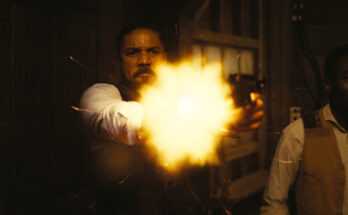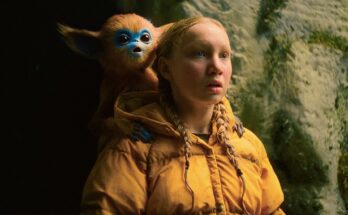Want to hear more from the actors and creators of your favorite shows and films? Subscribe to The Cinema Spot on YouTube for all of our upcoming interviews!
Managing editor & film and television critic with a Bachelor's of Arts in English Literature with a Writing Minor from the University of Guam. Currently in graduate school completing a Master's in English Literature.
Following his supporting role in last spring’s White Men Can’t Jump, rapper/actor Vince Staples (Dope, Lazor Wulf, Insecure, Abbott Elementary) returns to the world of streaming with a new project, this time being a Netflix limited series titled, The Vince Staples Show. The series is an extrapolation of two YouTube episodes—“So What?” and “Sheet Music”—and a minute-long advertisement to complement three music singles released between August and December 2019. Television series featuring rappers-turned-actors as the leads are not new, especially if fans of this specific genre are aware of FX Networks’ Atlanta and Dave‘s existence. However, what The Vince Staples Show brings to the table is a good time through a nice binge—and with a great release on Black History Month.
The Vince Staples Show is created, executive produced, and partly written by Staples, Ian Edelman (How to Make It in America, Entergalactic), and Maurice Williams (Entergalactic).
In this review, I will be discussing tonight’s release of The Vince Staples Show. As the title of this article suggests, there will be no spoilers.
Note: While there is no spoiler language attached to the show, I would still like to keep the narrative details vague. Reader’s discretion is advised.
Netflix’s The Vince Staples Show Synopsis
According to Netflix Media Center, here is the synopsis for The Vince Staples Show.
Who’s Vince Staples? Well, that’s a tricky question. He’s kind of famous, but he’s not. He’s kind of rich, but he’s not. He’s also kind of a criminal. But he’s…not? Follow him on his daily adventures, where anything that can go wrong usually does.
From the mind of Vince Staples and executive produced by Kenya Barris comes a limited series of satirical tales created by Staples, Ian Edelman and Maurice Williams.
Netflix Media Center
Netflix’s The Vince Staples Show Season 1 Descriptions
According to Netflix Media Center, here are the descriptions for all 5 episodes of The Vince Staples Show Season 1.
- Pilot—“Pink House” teleplay by Vince Staples, story by Staples, executive producers Ian Edelman, & Maurice Williams, directed by executive producer William Stefan Smith
After getting pulled over for speeding, Vince lands behind bars and meets an aspiring singer, inquisitive cops and a hostile inmate with a grudge.
Netflix
- Episode 102—“Black Business” written by co-executive producer Amy Hubbs & Staples, dir. by Ben Younger
When an armed robbery breaks out at the bank where Vince is applying for a small-business loan, he seizes an opportunity to negotiate a lucrative deal.
Netflix
- 103—“Brown Family” written by co-executive producer Crystal Jenkins and Staples, dir. by Stefan Smith
Tensions flare up over mac and cheese at a family reunion. As aunties bicker and hard truths emerge, Vince has a heart-to-heart with Uncle James.
Netflix
- 104—“Red Door” written by Staples and staff writer Winter Coleman, dir. by Stefan Smith
At a theme park, a mission turns into a misadventure for Vince, who encounters a menacing mascot. Deja gets into a heated argument at the gift shop.
Netflix
- Finale—“White Boy” written by Staples, dir. by Younger
A run-in with a longtime enemy at Vince’s old school escalates into a cat-and-mouse game all over Long Beach.
Netflix
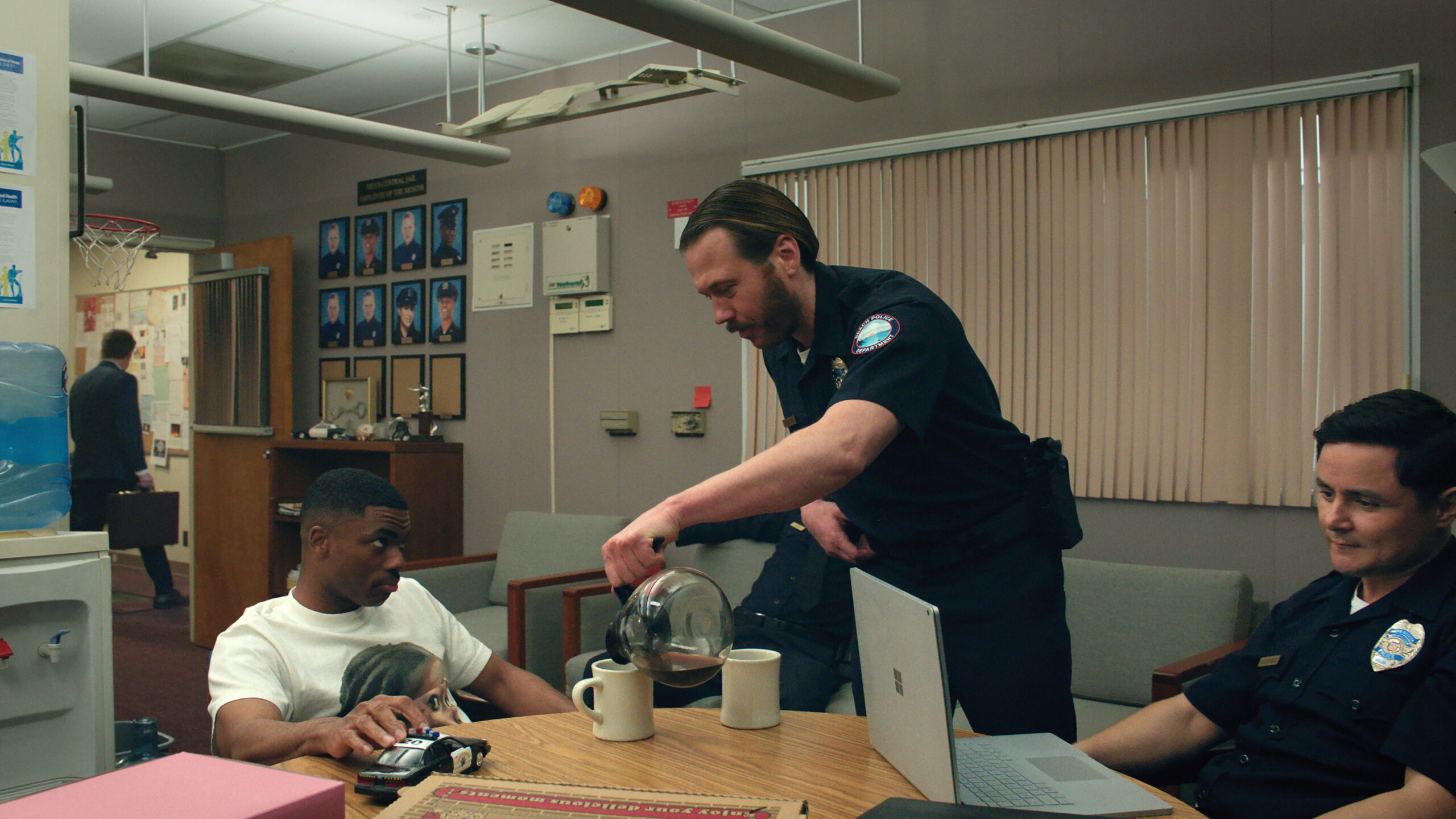
Discussion
The Vince Staples Show is quite the comedy title, with hints of drama sprinkled in to hold itself to the ground. To solely compare this limited series to Donald Glover’s Atlanta might be the wrong angle to look at this project. Yet, some viewers’ first instincts would be to identify close parallels between the two shows. Arguably, one could argue that Staples’s project takes at least some inspiration from Glover’s surreal comedy-drama series.
The Vince Staples Show‘s first episode, “Pink House”—which feels more or less like a pilot than the two video clips released in 2019—finds Vince Staples (himself) in a run-in with officers of the law, similar to Atlanta‘s two-part pilot, the second episode of which is titled, “Streets on Lock”. The Netflix series’ penultimate episode of its premiere season also features Staples in a brief predicament mirroring the opening scene of Atlanta’s “Go for Broke” episode. This does not mean much in terms of driving the plot forward. Although, it’s the exchange in dialogue that comes off as uncanny. Thirdly, there is a guest character who resembles Katt Williams’s Alligator Man because of their similar backstories, and what those backstories teach the protagonist feels uncanny as well.
The series sees Staples in another collaboration with some familiar faces from White Men Can’t Jump. This includes the Hulu film’s director, Calmatic, serving as the Netflix title’s consulting producer and the film’s co-writer Kenya Barris serving as the show’s executive producer. Other than the aforementioned commonalities with Atlanta, not much else is present in Staples, Edelman, and Williams’ series to make distinctions. If anything, the surrealism aspect surely speaks for itself in sizeable areas.
The Vibes
Neishea Lemle and Michelle Page Collins’ costume designs are interesting work. On the one hand, Staples begins the season wearing a white tee with a person’s face bearing a third eye, poking fun at things like secret societies such as the Illuminati. In another episode, the rapper makes a business deal in a flowery jacket to give off a friendly look to a bank loan officer. I also like Staples’ polo shirt in the finale, which sets him apart from an iconic action character that his cat-and-mouse conflict references. To supplement the costumes are the hairstyling and the makeup. Both of these are stunning on Staples’s romantic partner, Deja (guest star Andrea Ellsworth), in “Brown Family”.
Music composer Bekon’s scoring weighs in on the positive aspects the show has in store. The grave piano playing as Staples exits the bank in “Black Business” and the upbeat score at the end of “Red Door” complement the main character in personally dire moments. Music supervisor Gabe Hilfer’s song selections and supervising sound editor Lauren E. Price’s sound work also contribute to the moods of certain scenes in episodes. The loud banging towards the end of the season is perhaps one of the most startling things I have heard in an episode of television lately.
Cinematographers Ayinde Anderson, Isiah Donté Lee, and Alan Gwizdowski’s camera work are as much a major highlight for the series as are the music and sound designs. Anderson’s framing of a cellmate at the opposite corner of Staples in jail, Gwizdowski’s shot of cotton candy being prepared, Anderson’s three-minute one-take shot of Staples’s homelife in his younger years, or even Staples’s body shown from the other side of a windshield capture the severity that balances with the levity that I have come to appreciate about the series.
The Writing
The writers’ teleplays are feasible in terms of delivering some worthwhile comedy and a narrative subtly connected by its detail. This fictional world revolving around Vince Staples is an intriguing one, with a mere five short episodes feeling as if watching a feature film altogether. Small things about it make me laugh, e.g. the pronunciation of certain words and phrases, the dark irony of the narrative, and references to popular culture, whether that involves references catered to white people, Black people, or those in between. For instance, Staples and co-executive producer juxtapose the Ocean’s Eleven films with F. Gary Gray’s Set It Off and their different means of stealing money from banks.
Race and Color
What I love about the show is the fact that its episode titles are named after colors off a palette, i.e. “Pink House”, “Black Business”, “Brown Family”, “Red Door”, and “White Boy”. Upon first watch, it seems to be a play on or the inclusion of hues, from a yellow UNO playing card to a red filter to accentuate anger. Moreover, the series appears to be a celebration of Black life and living. In one episode, viewers find Staples attending a cookout with family, who excludes his mother, Anita (guest star Vanessa Bell Calloway), from playing a role in their social gathering.
One highlight, albeit minor, that The Vince Staples Show makes is the emphasis on racism and colorism toward and within the Black community and the degree to which it affects some members. I almost had a moment of existentialism when the last line in “Brown Family” by an old uncle (Cal Gibson) was delivered, and it was delivered well.
Redefining Life
Love is the beginning and ending of everything, and if you look hard enough, [then] you’ll find what you’re searching for or what’s searching for you.
Caricature artist (Betsy Moore)
The particular movements made throughout the series are worth noting. Staples, his co-writers, and the directors transform meaning within frames and scenes in ways that could be surprising. There is no large message to gain other than to have a positive outlook on life, which is what Ice Cube conveyed in his hit rap song, “Today Was a Good Day”. Still, the season’s episodes do offer some advice and small yet simple anecdotes that are universally known by all. So far, the series provides lessons about wise time management and the origins of “true happiness” that people should already know of.
Specifically, there are at least a couple of Biblical references to add a layer of sweetness to the narrative. One that I love the most is the New Testament parable involving Jesus Christ feeding the masses. Of course, it isn’t to suggest that Staples is the Second Coming. Rather, there is something in delicacies such as mac and cheese serving as the modern loaves and fishes that become symbolic of communion and community. The repetition of this idea is wild, given the two episodes this is used in. For Staples, it’s about how he aims to spread his success and the impact that has on others, whether negative or positive.
Memory as Metaphor
Moreover, The Vince Staples Show has a small theme of memory and how reflection plays into the metamorphosis of meaning. It could be as weighty as the quality time spent with loved ones, or as trivial as what food dish is brought to the cookout. More so, it also points to the allies and enemies made during Staples’s life journey. Due to the short runtimes of the show’s episodes, viewers are not given enough space to reflect, and so we’re stuck with what we see. The series hits hard when it needs to, but it also raises spirits when it’s required. What I must commend about it is how narrative elements and events are permitted to come full circle in five episodes. Such is the case when Staples comes home to Deja and she asks about his day, which is basically all that we can do on a human level.
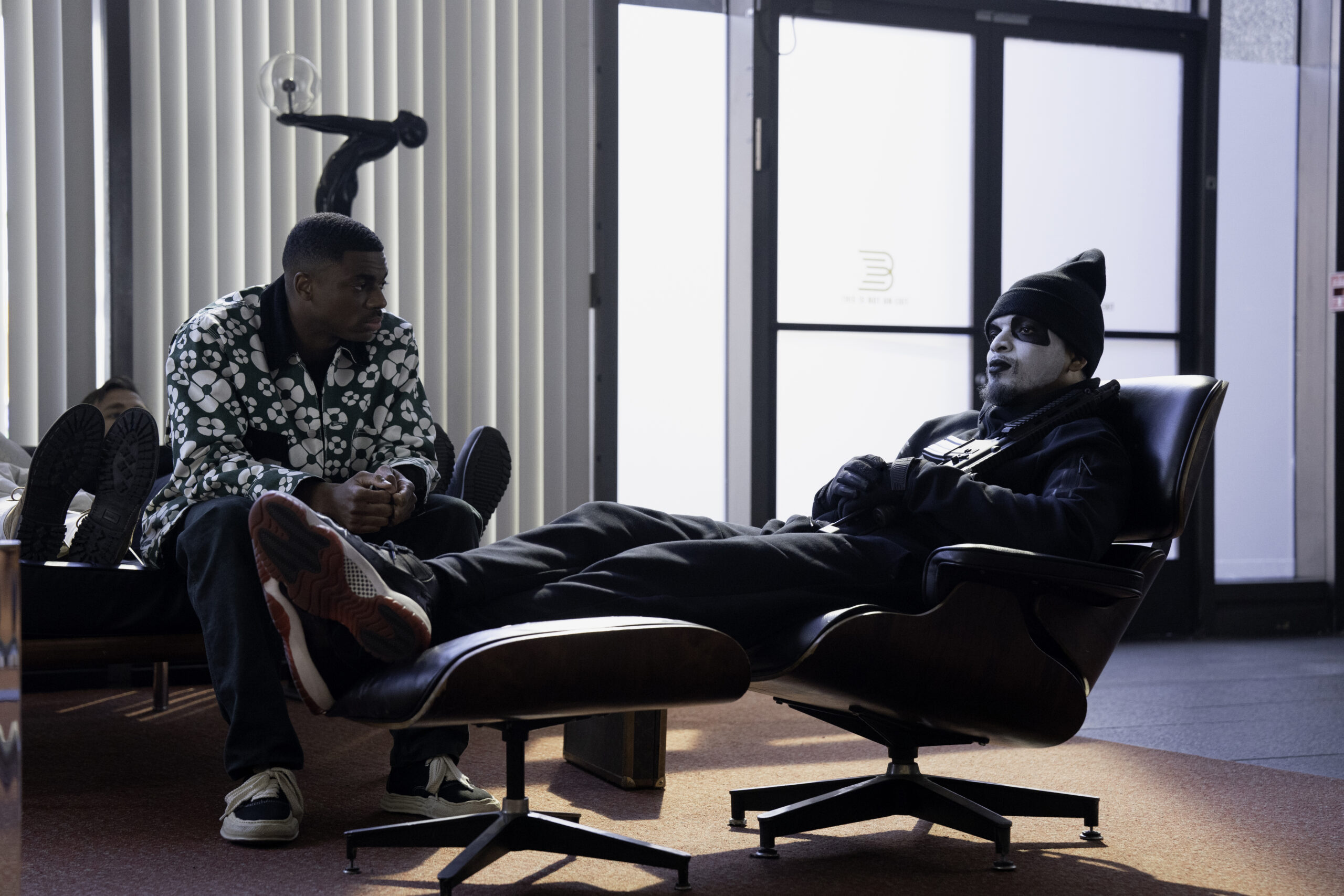
The Crew Behind The Vince Staples Show
Ayinde Anderson serves as the director of photography for the season’s first two and final episodes.
Isiah Donté Lee is the cinematographer for the third episode and is the additional director of photography for the fourth episode. Alan Gwizdowski is the cinematographer for the fourth episode.
Winter Coleman serves as the staff writer for the series.
Paul Swain is the editor for the first three episodes. AJ Van Zyl is the editor for the final two episodes.
Peter Daucsavage is the additional editor for the season’s pilot and third episodes. Daucsavagae is the assistant editor for the first three episodes. Forest Mullinary is the additional/ assistant editor for the final two episodes.
Bekon scores the soundtrack for the series.
Gabe Hilfer (How to Make It in America, Creed, Luke Cage, If Beale Street Could Talk, Black-ish, Invincible, The White Lotus, White Men Can’t Jump, Lift) serves as the music supervisor.
Nathaniel Hill and Mike Datz serve as the music editors. Lauren E. Price serves as the supervising sound editor.
Jimmy Sharp serves as the series’ stunt coordinator.
Alexis Koczara and Christine Smith Shevchenko serve as the casting directors for the series. Gianna Butler is the casting associate.
Rich King Casting and Alex Diaz are the extras casting directors for the series.
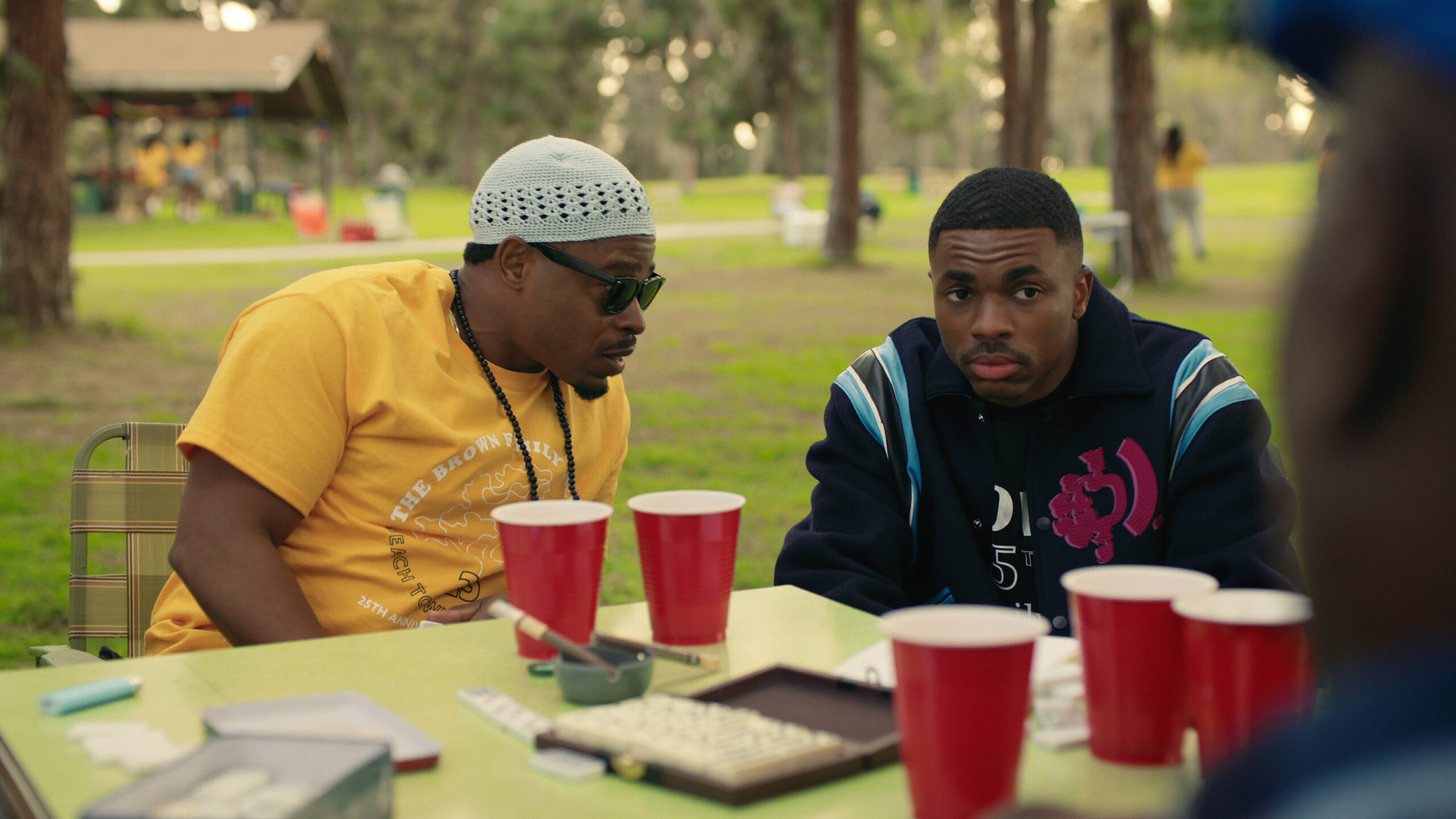
Aesthetics
Natalie Groce serves as the production designer for the series. Madelyn Wilkime is the art director.
Ophelia Castellitto is the assistant art director for the pilot episode. Laurin R. Guthrie is the set decorator for the series.
Neishea Lemle (White Men Can’t Jump) is the costume designer. Michelle Page Collins is the assistant costume designer.
Camille Ariane is the makeup department head for the first two episodes. Golden Sun Shyne is the makeup department head for the season’s following three episodes.
Nayari Navas is the assistant makeup department head for the first two episodes.
Lili Eve Kaytmaz and Navas are the key makeup artists for the second episode. Vanessa Marie Moreno is the key makeup artist for the third and fourth episodes. Ariane is the key makeup artist for the season finale.
Tammy Dube, Rosetta Garcia, and Lisa Ann Morgan are the additional makeup artists for the second episode. Kaytmaz and Morgan are the additional makeup artists for the third and final episodes. Kaytmaz is the additional makeup artist for the fourth episode.
Tinisha Meeks is the hair department head for the season’s first four episodes. Tonya Cryer is the key hairstylist for the first four episodes.
Shirlena Allen, Stenice “Nisa” Anderson, Lisa Buford, Nena Ross Davis, and Dominique Evans are the hairstylists for the pilot.
Anderson, Buford, Ross Davis, and Evans are the hairstylists for the second episode. Allen, Anderson, Buford, Ross Davis, and Kahlil Sledge are the hairstylists for the third episode. Allen, Anderson, Debra Y. Brown, Buford, Evans, and Sledge are the hairstylists for the fourth episode. Anderson, Buford, and Davis are credited as the hairstylists for the season finale.
The Cast Behind The Vince Staples Show
Vince Staples stars as a version of himself.
Guest Stars
Andrea Ellsworth portrays Deja, Staples’s romantic partner. Naté Jones (FX’s Atlanta series finale, Abbott Elementary) portrays Bri, a friend of Staples. Vanessa Bell Calloway plays Anita, Staples’s fictional mother.
Watts Homie Quan voices “The Homie”.
Bryan Greenberg, Scott MacArthur (Halloween Kills, History of the World: Part II, No Hard Feelings, Suncoast), and Arturo Castro (Narcos, Silicon Valley, The Menu, Entergalactic, History of the World: Part II, White Men Can’t Jump) play Officer Shaw, Officer Boucher, and Officer Gutierrez, respectively.
Christopher Meyer (General Hospital, Wayward Pines, The Sex Lives of College Girls) plays Robb, a man in a jail cell looking for opportunities.
Rafael Castillo portrays Poke, a jailmate who yearns to stab. Teddy Lane Jr. plays Walter, a jailmate who has gotten stabbed.
Rick Ross plays a version of himself in the second episode.
Myles Bullock (Marvel’s Runaways, White Men Can’t Jump) portrays “the Bank Robber”. Matt Oberg portrays Mr. Hightower, a bank manager in Los Angeles.
Franz Drameh (Attack the Block, Edge of Tomorrow, DC’s Legends of Tomorrow) portrays Timothy, a member of the bank robbery crew.
Monnae Michaell and James Earl (Gridiron Gang, No Ordinary Family, Glee, The Belko Experiment, Scream Queens, Narcos: Mexico, Insecure, White Men Can’t Jump) play Gladys and Travis, two family members at a cookout in the third episode, respectively. Kareem Grimes portrays Uncle Mike.
Cassandra Relynn plays Sharon. Beau Billingslea portrays Uncle James.
Joi Symone voices Tanisha.
Pharaoh Singleton guest stars in the fourth episode as William, a cashier at a Surf City gift shop.
Patrick Walker guest stars in the season finale as “White Boy”, an old enemy of Vince’s from school. Idris Keith plays Junior, White Boy’s son.
Jamald Gardner appears as Vince’s Dad, Drew.
Christopher Farrar plays Teen Vince, while Cedric Joe plays Teen Homie.
Smaller Roles
Rashad Hood is credited as “He Look Grimey”. Hannah Pheng plays a Tired Worker.
Jeff Patneaude plays himself, credited as a Rival Real Estate Agent opposite Bri.
Angela Cristantello plays a Woman/Secretary in the second episode. Arthur Richardson plays a janitor.
Sadie Newman plays a lady. Tom Sons plays Swat Guy #1.
In Episode 3, David Terrell plays Uncle Wayne. Deanna Reed-Foster plays Janine. Amaury Bubba Newsome plays Jaylyn.
Staci Lynn Fletcher portrays Paulette. Cal Gibson portrays an Old Uncle.
Tiberius Byrd portrays Deshaun/ “Dee Dee”, Deja’s younger brother, in the fourth episode. Byrd is credited as Deshaun in the finale as well.
Samir Royal and Giovani Chambers play Marcel and Jeremy, Deshaun’s friends, respectively. Amari Johnson plays a Bumper Car Kid.
Warren Sroka portrays the Lifeguard mascot—referred to as “Dude”—at the Surf City amusement park.
Jelani Estelle and Terra Strong (The Fairly OddParents: Fairly Odder, HBO’s Westworld Season 4) play Kandi and Kayla, two info center girls at Surf City. Jayden Robertson and Keisha Thompson play a Son and his Mom at Surf City, respectively.
Timothy Erin Jones plays Chicken George, a cashier at a Pup’s Chicken Coop fast food restaurant. Tyler Yath plays a Groundskeeper at Surf City named Phil. Vincent Stalba as “Man Behind The Counter” at a Pup’s Chicken Coop Jr.
Gene Silvers plays a Magician. Betsy Moore portrays a Caricature Artist.
Zylen Arnaud plays a 5-year-old Vince in the finale.
Veronica Bruce plays a teacher, Miss Hathaway. Maylen Bradford plays “El Chapo”, a drug dealer at Nathanial Hall, a high school. Ryan Diego Shoaf plays Jeremiah.
Jennifer Kim (The Blacklist, Search Party) plays a News Reporter.
Cheyenne Wilbur portrays an army veteran, credited as “The Wise Man”.
Performances and Character Developments
Staples’s portrayal of a fictionalized version of himself is mostly calming. Perhaps this is due to the show’s slogan of Staples living the “good days” of his life akin to Ice Cube in his “Today Was a Good Day” music video. However, what I enjoy more are the moments where the rapper/actor leaps out of his comfort zone to truly deliver. “Red Door” is where he allows himself to do more and shine as a result. Staples performs better when inserted into certain stressful and/or adrenaline-pumping situations, which are not as often as I would like.
Ellsworth is her own person in the role of Deja. There is not enough of her in this season, and if The Vince Staples Show does get greenlit for a second season, then this guest character is one person who deserves more time under the spotlight. The two episodes where viewers can see this happen lie in “Brown Family” and “Red Door”, and that is where she can exhibit some range. Otherwise, I am not too fond of the episodes where she is treated as a “non-playable character” type.
There is something in Grimes’s performance as Uncle Mike in the brief screen time he has that makes for an interesting watch. His character’s conversation with Staples about handling money and how the actor delivers certain serious lines somewhat twist into brilliant comedy that does the job for me.
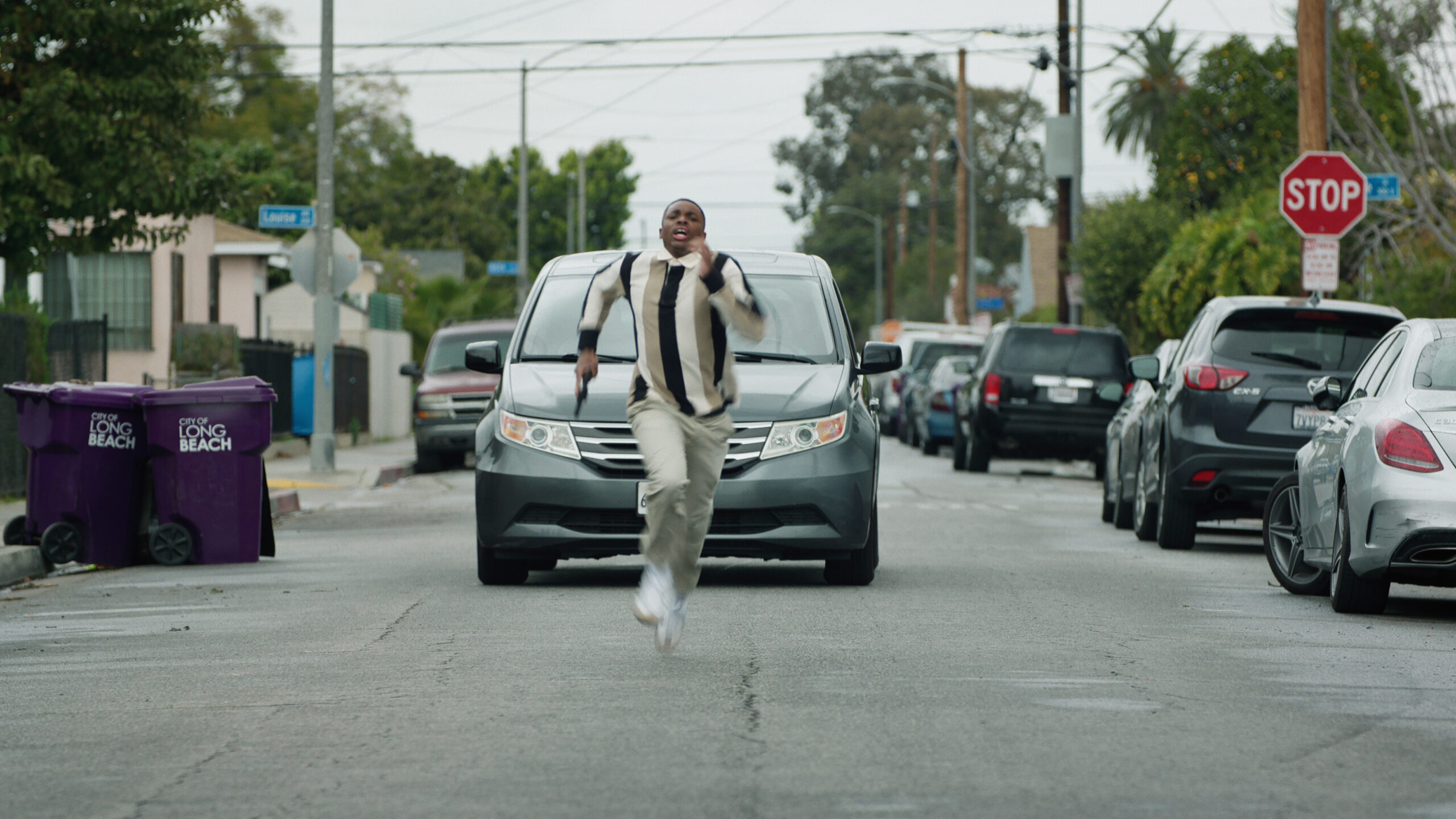
Final Thoughts on Netflix’s The Vince Staples Show
As a comedy-drama, The Vince Staples Show is effective in how it evokes all the right emotions from the audience. It has its good moments and it has its unfortunate ones. The action in the latter two episodes has neat stunt coordination from Jimmy Sharp. Sadly, that’s cut short with the runtime they each have and the stories they showcase. It’s a shame because I would love to see Staples dip more into an action role.
Personally, the episode count is not the issue. Their runtimes can be thin, especially when there is a promising story to be told but not enough meat to display more substance. If this does get a second-season renewal, then I hope we could see a spectacle along the lines of a half-hour show. Currently, I do not know what it wants to be, but I do have an idea of what it could eventually be. After all, that’s always the test of premiere seasons of television programming. Overall, The Vince Staples Show is primarily a decent watch, and it deserves its praise sooner or later.
4/5 stars
The Vince Staples Show streams via Netflix starting today, Thursday, February 15th!
For more comedy and drama-related news and reviews in film and television, do not forget to follow The Cinema Spot on Facebook, Twitter, and Instagram!
Managing editor & film and television critic with a Bachelor's of Arts in English Literature with a Writing Minor from the University of Guam. Currently in graduate school completing a Master's in English Literature.


